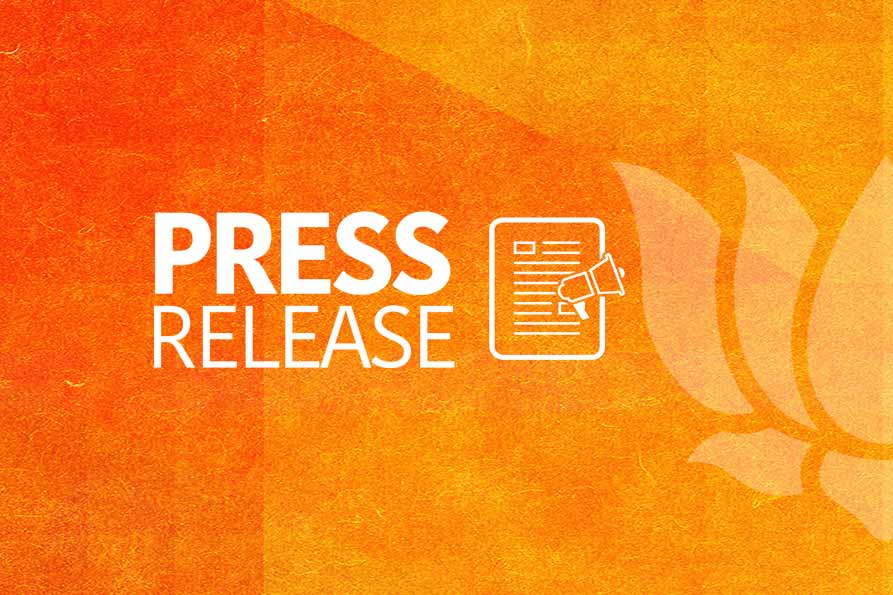
Member of Parliament
and
and
Member of the Indian Delegation
on
Agenda Item : 29
International Cooperation in the Peaceful Uses of
Outer Space
Fourth Commitee
60th Session of the
UN General Assembly
New York
October 19, 2005
 Mr Chairman,
Mr Chairman,The Indian delegation is pleased to see the progress achieved by the Committee on the Peaceful Uses of Outer Space (COPUOS) at its 48th Session. COPUOS has actively promoted efforts aimed at bringing the benefits of space technology to mankind to ensure sustainable development for all. We are also satisfied to note that COPUOS, under the mandate of the General Assembly, has been a Useful forum taking new initiatives aimed at meeting the challenges and serving the interests of the entire humanity.
We would like to warmly congratulate Dr Adigun Ade Abioudun of Nigeria who successfully chaired the 48th Session of COPUOS. The presence of H E Mr Jean Ping, the President of the 59th Session of the General Assembly at the opening session was symbolic of his support to the Committee and its work. His appreciation of the work being carried out by the Committee and his broad perspective for space to be used for the betterment of human kind are worthy of emphasis. We are grateful to him.
We are happy to note that the Libyan Arab Jamahiriya and Thailand have joined the family of COPUOS as new members. We are confident that their participation will enrich the work of the Committee further.
We are meeting in the aftermath of huge natural disasters which have resulted in massive loss of life and property the Tsunami disaster triggered by massive earthquake with its epicentre in Banda Aceh in Indonesia, the very recent floods/storms in new Orleans in USA and Central America and the most recent tragedy that caused a terrible earthquake in Pakistan, India and Afghanistan. India conveys its deepest condolences to all the countries whose people are affected by these tragedies. They remind us of the greatest urgency with which we have to deal with the subject of integrated global disaster management systems.
The Indian delegation notes with appreciation the activities covered by the United Nations Programme on Space Applications, in spite of budgetary constraints. The priority themes being concentrated by the Programme like Disaster Management support, especially Sustainable Development, and Capacity Building are of utmost importance to the developing countries.
The Indian delegation supports the recommendations of the action team on "Integrated Global Disaster Management Systems" led by Canada, China and France to establish a "Disaster Management International Space Coordination Organisation". We prefer this organisation to have informational, coordination and operational functions under the UN umbrella for universal access. Innovative financial models must be explored to make this initiative effective and useful to one and all.
The Indian delegation has also noted the consideration, by the Legal Sub committee of the subject of draft Protocol on Space Assets to the Convention on International Interest in Mobile Equipment a private legal initiative. It is very interesting to note widely varying views of the Member States on the issue of UN acting as the Supervisory Authority for the future Protocol. It is a matter of satisfaction to us that the Legal Sub committee would continue to watch the development of the draft Space Assets Protocol.
The Indian delegation congratulates NASA, ESA and ASI for the successful landing of Huygens Probe on the surface of Titan, the Moon of Saturn, on 14th January 2005 as part of their joint Cassini Huygen's Mission. This represents a significant step forward in space.
It has always been India's endeavour to serve the poor, illiterate and deprived masses of our country, using the latest space technology.
In this respect, let me briefly state the programmes India undertook to achieve these objectives.
During the 48th COPUOS session, India organised an exhibition "India in Space". Through the exhibition, we tried to demonstrate how a developing country can use the tools offered by space technology to alleviate social and economic conditions both within and outside its borders. It highlighted the important role that the applications of science and technology play in the global development agenda.
The first operational launch of the Geosynchronous Satellite Launch Vehicle (GSLV) was successfully carried out on 20 September 2004 posting success in all of its three launches. The satellite, EDUSAT, is exclusively devoted towards supporting Satellite based Educational networks across the country.
The ninth launch of India's Polar Satellite Launch Vehicle (PSLV) was successfully carried out from the Satish Dhawan Space Centre SHAR on 5 May 2005. The Launch Vehicle orbited Remote Sensing Satellite CARTOSAT 1 meant for Cartography applications and an auxiliary satellite HAMSAT. Whereas the CARTOSAT enables three dimensional stereoscopic imaging, the auxiliary satellite, HAMSAT, is an ISRO contribution to the International Amateur Radio Operators.
ISRO is actively pursuing., in addition to Remote Sensing Applications Programme, three new Space Applications programmes, namely, Space Systems based Tele education, Space systems based Telemedicine, and Village Resource Centres (VRCs).
A large number of Satellite based Educational Networks are being commissioned using EDUSAT. Telemedicine Projects were further expanded in the last one year. More than 50,000 consultations had taken place using these Telemedicine Projects. ISRO organised the International Telemedicine Conference at Bangalore from March 17 to 19, 2005 to create greater awareness on the technical, operational, social, financial and other related aspects of telemedicine. The Conference was attended by 550 delegates from 40 countries.
A Pilot Project on the Village Resource Centres (VRC) was inaugurated in October 2004. The project is based on interactive VSAT based Networks with possibility of deriving connectivity and enabling various services needed at the local level, and enabling tele education, telemedicine and on line support in rural areas, has already commenced. The initial results are very encouraging. For a country like India where 750 million people live in 600,000 villages, such projects show the real use of space technology in sustained development.
International cooperation, in particular South South cooperation, has been an important component of India's Space Programme and a number of activities in this area have been taken up in the last one year.
A connectivity mission between India and the countries of the African Union had been launched last year, under which it was proposed to connect all the 53 nations through a satellite and fibre optic network. Apart from providing effective communication and connectivity among the nations, the same link would provide tele education, tele medicine, e governance, e commerce, info tainment, resource mapping and meteorological services. This network would give rural connectivity to the entire Pan African Union an effective way to use technology to provide democratic access and empowerment. A project report in this regard has been submitted to the African Union, which has appointed an expert committee to review the technical contents of the report. We understand that the African Union is now in the process of identifying beneficiaries among their member states, after which the project shall be implemented.
India has been an active member of the COPUOS ever since its establishment by the General Assembly in 1958. India has participated in global cooperative programmes in such fields such as remote sensing, telemedicine, tele education and space based disaster management. India is a member of the International Charter "Space and Major Disasters" which has been operationalised on several occasions in response to earthquakes, floods, forest fires, etc.
India also hosts a Mission Control Centre for the International Satellite System for search and rescue designed to provide distress alert and location data to assist in search and rescue operations.
The Centre for Space Science and Technology Education for Asia and Pacific Region affiliated to UN which is based in Dehradun and Ahmedabad in India, continues to make good progress. The Centre has so far conducted 18 Post Graduate programmes with a duration of nine months. In addition, it organised a number of short term Courses /Workshops. 622 scholars from 46 countries from the Asia Pacific Region and from outside of the Region benefited from the educational activities of the Centre.
We are happy to inform that the Centre will complete 10 years in November 2005 since its establishment in 1995. Over this decade, the Government of India through ISRO spent about 5 million dollars in creating the infrastructure for the UN Centre at Dehradun and Ahmedabad in India. The Centre is supported by India with a recurring expenditure of one million dollars per year both in kind and in direct grants in aid for the regular activities.
We earnestly believe that the Space is an instrument of development. We encourage capacity building through International cooperation enabling the developing countries to benefit from Space Application Programmes. We are convinced that sincere implementation of UNISPACE III recommendations, providing practical benefits, will further enhance International Cooperation in the pioneering area of Space.
We, in India, have always believed since time immemorial in the Vedas the ancient Hindu scriptures which were written more than five thousand years ago:
Peace in the Heavens
Peace in the Space will bring
Peace to the Earth
With these words, I have the pleasure of endorsing the Report of COPUOS.
Thank you, Mr Chairman.
To Write Comment Please लॉगिन



.gif)





